We receive an average of two inquiries per day on why so many people are replacing their lead water mains with copper. This most commonly happens after a homeowner observes us working at their neighbor’s house and thinks “if they are doing it maybe I should”.
The most common reason why NYC homeowners decide to replace their lead water mains with copper is if they are expecting a newborn child. When people stop and think, it doesn’t really make much sense that they would only want to remove the lead from their water when a child is in the picture. At this point we usually get a good laugh with a response of “yea I probably should have done this over the previous 8 years I have been living in the house.
The second most common reason is if the house was recently purchased and as part of the home inspection it was flagged that the domestic water main should be replaced from the house, out to the street. In this case the seller usually reduces the cost from the sales price and the new owner has the lead water main replaced before they move in the house.
We always advise homeowners to allow for an average of two weeks for permitting and scheduling before the work is completed. In some cases it may even be quicker.
The third most common reason is if the lead water main is leaking and must be replaced on an emergency basis. This scenario usually results in a frantic call from a property manager, homeowner or tenant. Most people experience once water main break in a life time, for this reason most people do not know what to do and call any “plumber” they become aware of. Unfortunately replacing a broken lead water line requires a plumbing specialist that has the DOT bond and insurance to open the public sidewalk and roadway. This type of job is done on an emergency basis and is usually completed within 48 hours.
The final most common reason for a lead water line replacement is if the property owner had been suffering from low water pressure and is tired of dealing with it. When dealing with a lead water main the inside of the pipe tends to corrode overtime making the circumference of the pipe smaller that it was when installed. For example, if you have a 1” lead water main with 50 years of corrosion built up on the inside, the inside of the pipe may only be ½” wide.
It is also common for a homeowner to replace the tap connection when replacing a lead water main for this reason. First the plumber should check the DEP “tapping records” and see if the existing tap sized has been identified. At this point the plumber should refer to the DEP sizing table which will determine the size of the tap connection and the new copper water main. This information is based on total linear footage of pipe being installed and a plumbing fixture unit count.
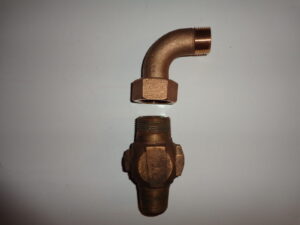 |
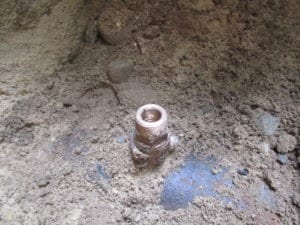 |
Job-site Report
Recently in Brooklyn a homeowner contacted Harris after receiving a 3 day violation notice from the city and needed it fixed on an emergency basis. They first became aware of the leak after noticing water surfacing at their curb line.
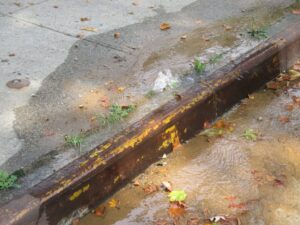 |
This location happen to be in a DOT bus pad which required a special saw to remove the roadway before the water was turned off.
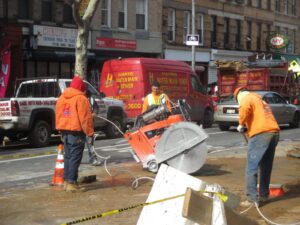 |
Two hours later we reached the old lead water line
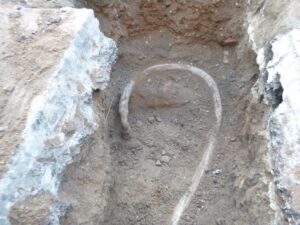 |
And the new copper water main was installed the very same day!
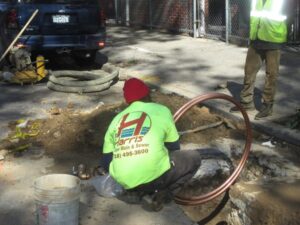 |
Recently in Manhattan a couple was expecting a baby boy and was planning on replacing their lead water main. To their surprise, this was going to be done on an emergency basis due to an unexpected water main break in the roadway. The family first became aware after identifying a roadway sinkhole in front of their apartment.
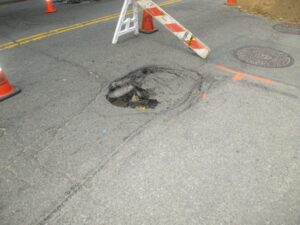 |
We began excavating in the roadway the very next morning.
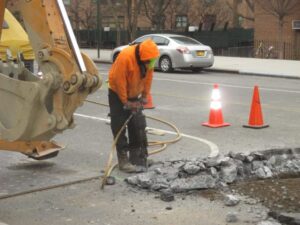 |
We began making the water main tunnels once the water leak had stopped
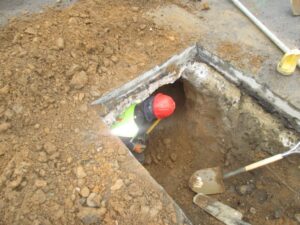 |
And had the new copper water line installed by 7pm the same day.
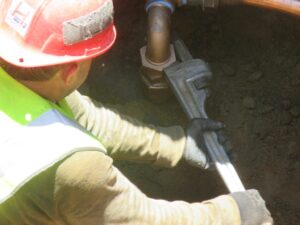 |





















